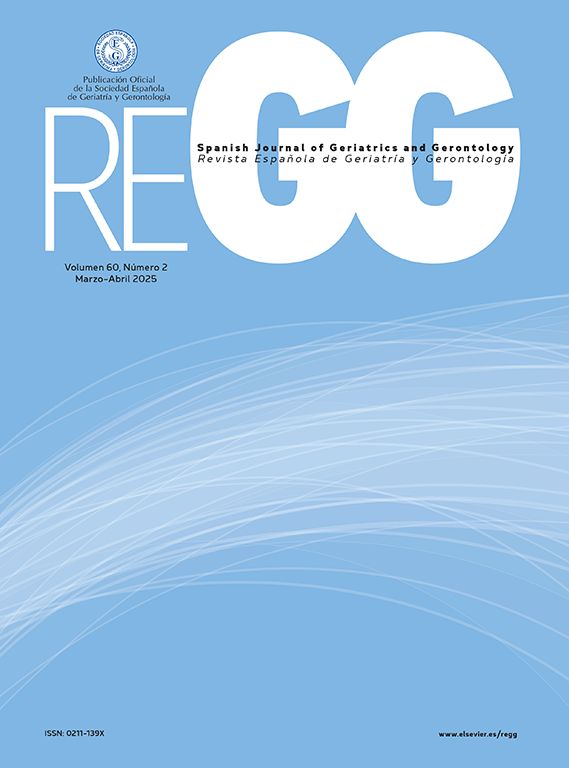conocer los factores de riesgo asociados a caídas repetidas en una población institucionalizada.
Material y métodoestudio observacional de cohortes. Se estudiaron variables basales antropométricas, clínicas, farmacológicas, funcionales y mentales de un grupo de pacientes con caídas repetidas y de otro grupo sin caídas en un centro residencial. Se realizó un análisis estadístico descriptivo y un análisis inferencial.
Resultadosdurante un período de 2 años, se siguió a 314 individuos de un centro residencial, de los que 97 constituyeron la muestra final. Las variables asociadas al grupo de caídas de repetición (n=53) fueron: perímetro de la pantorrilla (p<0,001), proteínas séricas (p=0,04), demencia (p<0,001), enfermedad neuropsiquiátrica (p=0,011), fractura ósea previa (p<0,001), vagabundeo (p<0,001), consumo de neurolépticos (p<0,001), antagonistas del calcio, inhibidores de la enzima de conversión de angiotensina (IECA) o bloqueadores beta (p<0,001), índice de Barthel (p<0,001), escala de Tinetti (p<0,001), necesidad de ayuda técnica para deambular (p=0,007) y el Mini-Examen Cognoscitivo (MEC) (p<0,001). El consumo de neurolépticos, el vagabundeo, el uso de ayudas técnicas y las cardiopatías actúan como factores potenciadores de nuevas caídas. En el análisis de regresión, los modelos que predecían caídas de repetición fueron demencia-vagabundeo-consumo de neurolépticos, demencia-vagabundeo- fractura ósea previa, Tinetti-proteínas-perímetro de pantorrilla y Barthel-proteínas-perímetro de pantorrilla.
Conclusioneshay factores intrínsecos al anciano que permiten identificar a los que están en riesgo de caídas repetidas. La valoración geriátrica integral y el uso de escalas de valoración Barthel, Tinetti y MEC son útiles en la identificación de este grupo de riesgo.
to identify the risk factors related to recurrent falls in an elderly population living in a nursing home.
Material and methoda prospective cohort study was performed. The variables studied were: anthropometric, clinical, pharmacological, functional and cognitive characteristics of fallers and non-fallers. A descriptive analysis and logistic regression were performed.
Resultsa total of 314 patients were monitored over a 2-year period, but 97 elderly residents were included the final sample. The variables associated with recurrent falls (n=53) were: mid-leg muscle area (p<0.001), serum proteins (p=0.04), dementia (p<0.001), neuropsychiatric disorders (p=0.011), previous bone fractures (p<0.001), wandering (p<0.001), neuroleptics (p<0.001), calcium antagonists, angiotensin-converting enzyme inhibitors or β-blockers (p<0.001), Barthel Index (p<0.001), Tinetti Index (p<0.001), the use of walking aids because of mobility problems (p=0.007), and the Mini-Examen Cognoscitivo (MEC; the Spanish-validated version of the Mini-Mental State Examination) (p<0.001). The risk of new falls was increased by wandering, walking aids, cardiac diseases, and the use of narcoleptics. Risk factors for falling in the regression analysis were dementia-wandering-neuroleptics, dementia-wandering-previous bone fracture, Tinetti-proteins-mid-leg muscle area, and Barthel-proteins-mid-leg muscle area.
Conclusionsthere are intrinsic factors that identify nursing home patients with a high risk of recurrent falls. Geriatric assessment and the use of the Barthel Index, Tinetti Index and the MEC are useful in identifying these high risk patients.






